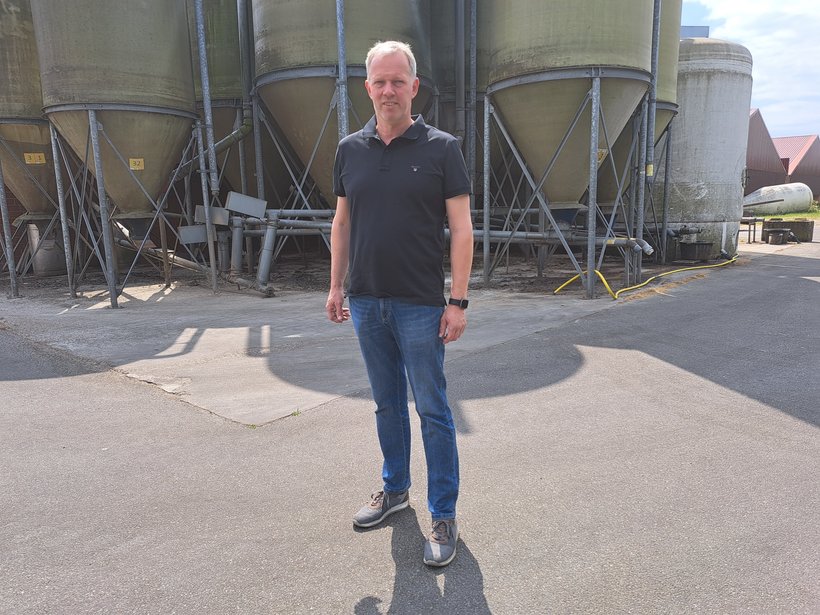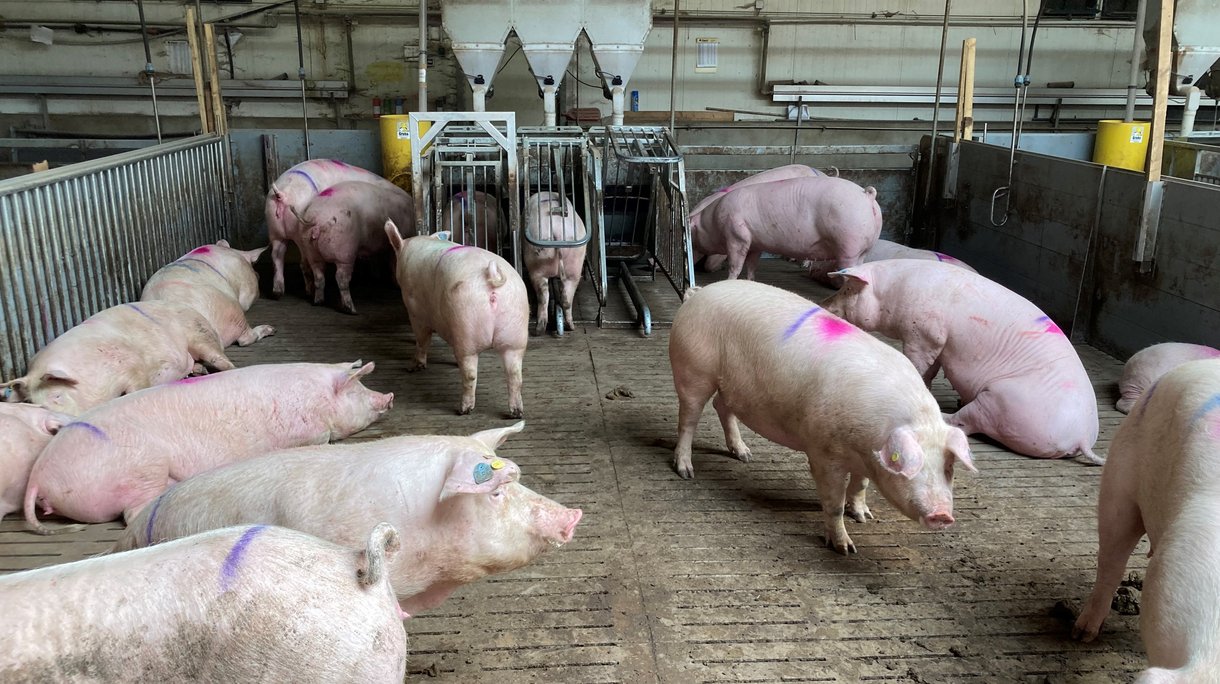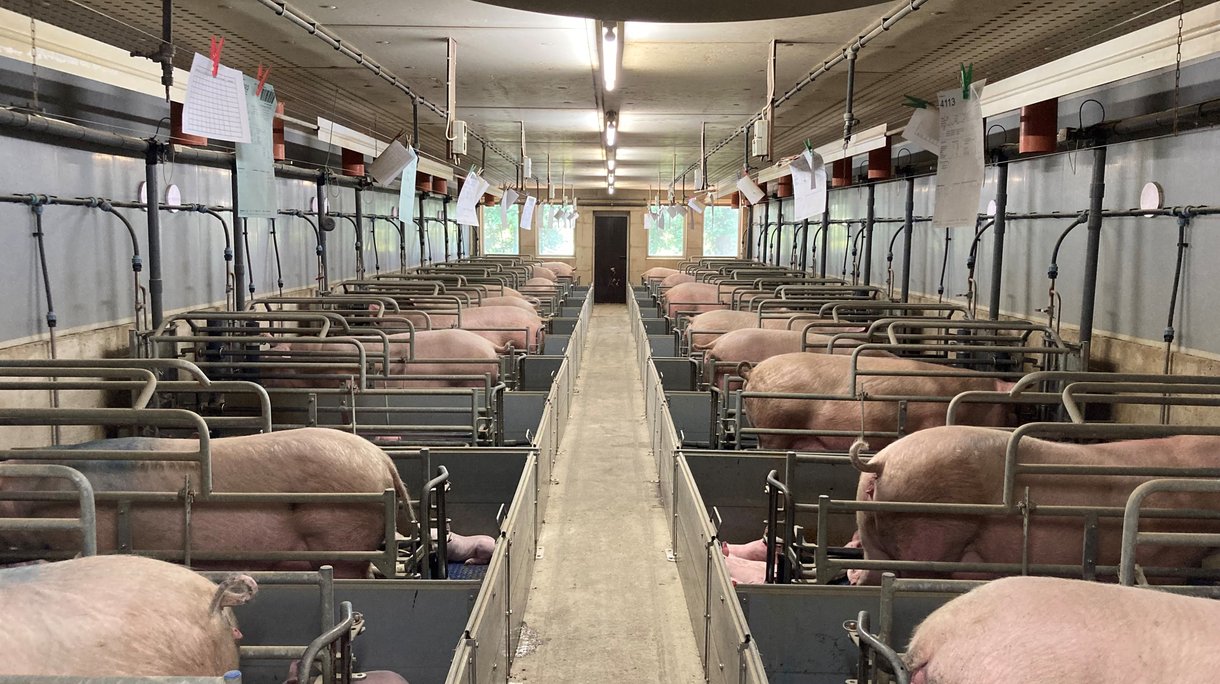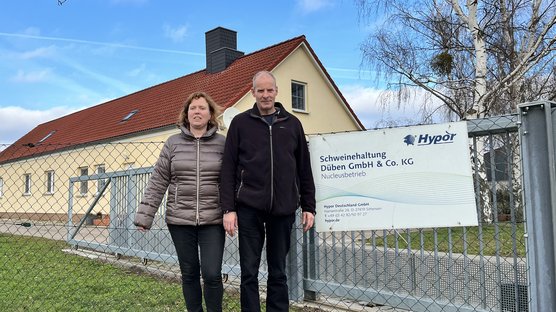
Published on July 5, 2023
“Correct genetics are key for labor savings”: A Hypor customer success story
Farm labor is difficult to find. Just ask pig farmer Wolfgang Beckmann from Meppen based in Germany. Yet he manages to produce, raise and deliver many uniform and healthy piglets each year. The key ingredient for this success: the right sow.
This article was originally published in “Varkensbedrijf” magazine. It has been condensed and republished here with permission.
You can't tell by looking at him during our visit in early June, but it's a stressful time for Wolfgang Beckmann. In addition to his 1,050 sows, 4,600 rearing sows and 9,300 fattening pigs, Beckmann has 370 acres of arable land, which requires a lot of irrigation. The 500 kW biogas plant also requires regular attention. Nevertheless, the German pig farmer takes the time to tell about his farm.

Genetics the basis of success
Beckmann produces his own sows through the BioHypor proprietary breeding system. He has 100 pure Landrace sows from Hypor for this purpose. To produce F1, these are inseminated with Hypor Large White. As a terminal boar, Hypor's Piétrain boar Maxter is used.
Beckmann says, "I chose Hypor genetics in 2002 because of their good fertility and uniform litters. I am still very satisfied with it.My current sows function well in groups and have good legwork. They farrow easily, and little farrowing assistance is needed. I have relatively few prolonged litters and few extremely large litters.” He added, “Colostrum and milk yields are good, resulting in uniform and healthy piglets, which have a weaning weight of around eight kilograms after four weeks. There is little work with weak piglets, and if I have to, I use at most two foster sows for every fifty sows," says the pig farmer, who says he is also happy with Maxter as the terminal boar. "This boar gives more and more vital piglets."
Good results despite relatively low labor
Consequently, the technical results of Beckmann's sows look good. The litter index at a weaning age of four weeks is 2.38. The total number of piglets born per litter is 16.5, and an annual average of almost 32 piglets per sow are weaned. In terms of feed consumption, Beckmann has stayed under 1,100 kilograms per sow per year for years.

This sow fits in with my aim to achieve the highest possible yields with the lowest possible costs. Labor friendliness certainly plays a role in this because that is becoming increasingly important. After all, it is not easy to get good farm workers here either.
Beckmann works with a farm manager for the sows, a full-time employee, two part-timers, and interns. His daughter Lea has also been working in the farm since the middle of last year. She supports the employees in the sow barn and takes care of raising gilts. Beckmann himself mainly services the finisher barns together with an employee. The arable part and the biogas plant are usually manned by one worker. "We have about 2.5 workers per thousand sows. That's not much, but fortunately, I have a farm manager who knows well what needs to be done and manages accordingly. Employees take responsibility. Because of the weekly system, everyone also knows exactly what needs to be done on which day."

Already saving substantially on labor
In terms of genetics in relation to labor, there is a solid foundation under the company. In addition, Beckmann made the necessary changes in recent years to save labor. Walking lines were reduced. Farrowing used to take place in two stalls, now in one. Breeding also takes place in one barn. The switch from liquid feed to dry feed for the pregnant sows also saves Beckmann and his farm workers a lot of hours. "We had a lot of work with sows that were taking in too little feed. We don't have that anymore. We also spend much less time on maintenance and minor repairs to the system. All in all, with the gestation sows we have a labor savings of seven to eight hours a week! That makes quite a difference. The new farrowing pen also saves us work. It's much easier to clean, for example. That also saves another four hours a week."
The pig farmer expects the demand for farm works to remain high for the next few years. "It is quite a task to find good professionals with a heart for swine farming… But we will have to continue to search and optimize. Taking care of animals is difficult to automate. What’s important are healthy and well-performing sows that easily raise many piglets."

